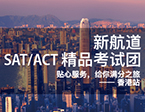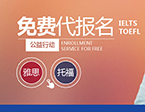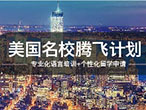供稿单位:互联网 原创作者:2015新航道权威讲师 责编:新航道小编
V20150425
|
Passage 1 |
||
|
Topic |
Making of Olympic Touch(新航道考前预测命中) |
|
|
Type of Questions |
选项式summary(4题)+段落信息配对(5题)+图表填空题(4题) |
|
|
Content Review |
||
|
A Every two years, people around the world wait in anticipation as a torch-bearing runner enters the Olympic arena and lights the cauldron. The symbolic lighting of the Olympic flame marks the beginning of another historic Olympic Games. The opening ceremony is the end of a long journey for the Olympic torch. The ancient Greeks revered the power of fire. In Greek mythology, the god Prometheus stole fire from Zeus and gave it to humans. The Greeks held their first Olympic Games in 776 B. C. The Games, held every four years at Olympia, honored Zeus and other Greek gods. A constantly burning flame was a regular fixture throughout Greece. At the start of the Olympic Games, the Greeks would ignite a cauldron of flame upon the altar dedicated to Hera, goddess of birth and marriage.
B The flame was reintroduced to the Olympics at the 1928 Amsterdam Games. A cauldron was lit, but there was no torch relay. The first Olympic torch relay was at the 1936 Berlin Summer Games and it was not introduced to the Winter Olympics until the 1952 Games. It was lit that year not in Olympia, Greece, but in Norway, which was chosen because it was the birthplace of skiing. But since the 1964Olympics at Innsbruck, Austria, every Olympic Games - Winter and Summer - has begun with a torch-lighting ceremony in Olympia, Greece, followed by a torch relay to the Olympic stadium. Designing an Olympic Torch
C The torch starts out as an idea in the mind of a designer or group of designers. Several design teams submit proposals to the Olympic Committee for the opportunity to create and build the torch. The team that wins the assignment will design a torch that is both aesthetically pleasing and functional. A torch can take a year or two to design and build. And once the torch has been built, it must be tested rigorously in all kinds of weather conditions. The look of the modern Olympic torch originated with John Hench, a Disney artist who designed the torch for the 1960 Winter Olympics in Squaw Valley, California. His design provided the basis for all future torches. Since then, designers have tried to create a torch that represents the host country and the theme for that Olympic Games.
D The torch must then be replicated . . . and replicated. It’s not just one torch making the journey to the Olympic stadium; it’s thousands. Anywhere from10, 000 to 15, 000 torches are constructed to accommodate the thousands of runners who carry them through each leg of the Olympic relay. Each runner has the opportunity to purchase his torch at the end of his leg of the relay.
Olympic Torch fuel E The first torch used in the modern Olympics (the 1936 Berlin Games) was made of a thin steel rod topped with a circular piece from which the flame rose. It was inscribed with a dedication to the runners. The torch must stay lit for the entire length of its journey. It must survive wind, rain, sleet, snow, and a variety of climates (desert, mountain, and ocean). For fuel, early torches burned everything from gunpowder to olive oil. Some torches used a mixture of hexamine (a mixture of formaldehyde and ammonia) and naphthalene (the hydrogen- and carbon-based substance in mothballs) with an igniting liquid. These substances weren’t always the most efficient fuel sources, and they were sometimes dangerous. In the 1956 Games, the final torch in the relay was lit by magnesium and aluminum, burning chunks of which fell from the torch and seared the runner’s arms. The first liquid fuels were introduced at the 1972 Munich Games. Torches since that time have carried liquid fuels - they are stored under pressure as a liquid, but burn as a gas to produce a flame. Liquid fuel is safe for the runner and can be stored in a lightweight canister. The torch designed for the 1996 Atlanta Summer Olympics has an aluminum base that houses a small fuel tank. As fuel rises through the handle, it is pushed through a brass valve with thousands of tiny openings. As the fuel squeezes through the small openings, it builds pressure. Once it makes it through the openings, the pressure drops, and the liquid fuel turns into a gas for burning. The tiny holes maintain a high pressure in the fuel to keep the flame going through harsh conditions.
F The 1996 torch was fueled by propylene, which produced a bright flame. But because propylene contains a high level of carbon, it also produced a lot of smoke - not a plus for the environment. In 2000, the creators of the Sydney Olympic torch came up with a more lightweight, inexpensive, and environmentally friendly design. To fuel their torch, they decided on a mixture of 35 percent propane (the gas used to heat home stoves and barbecue grills) and 65 percent butane (cigarette lighter fuel), which ignites a strong flame without making a lot of smoke. Because the propane/butane mixture can be stored as a liquid under relatively light pressure, it can be kept in a lightweight container. It then burns as gas under normal atmospheric pressure. The liquid fuel is stored in an aluminum canister located about halfway up the torch. It flows up to the top of the torch through a pipe. Before leaving the pipe, the liquid fuel is forced through a tiny hole. Once it moves through the hole, there is a pressure drop, causing the liquid to turn into gas for burning. The torch moves the liquid fuel at a consistent rate to the burner, so the flame always bums with the same intensity. The torch can stay lit for about 15minutes.
G The engineers behind both the 1996 and 2000 torches adopted a burner system that utilized a double flame, helping them to stay lit even in erratic winds. The external flame burns slowly and at a lower temperature than the internal flame. This flame is big and bright orange, so it can be seen clearly; but it is unstable in winds. The interior flame burns hotter, producing a blue flame that is small but very stable, because its internal location protects it from the wind. It would act like a pilot light, able to relight the external flame should it go out.
H When the 2002 Olympic Torch, in Salt lake city, the top section was glass, and the Olympic Flame burned within the glass, echoing the 2002 Olympic theme Light the Fire Within. The glass stood for purity, winter, ice, and nature. Also inside the glass was a geometric copper structure which helped hold the flame. The two silver sections also mirrored the blue/purple colors of the Fire and Ice theme
|
||
|
Questions & Answers Questions 1-3 Complete the summary below using NO MORE THAN THREE WORDS from the passage. Write your answers in boxes 1-4 on your answer sheet.
The Olympic torch, as Olympic Committee requested, is carefully designed which takes a years to design and build so that it is capable of withstanding all kinds of 1 ______and staying lit through widely differing weather conditions. The torch used in the modern Olympics which is to hold the 2 ______ And the torch must then be copied and thousands are built as demanded by the thousands of runners who carry them through. Each runner has the opportunity to 3 ______ his torch at completion of his journey of the relay for memorial and as for souvenirs
Questions 4-9 Match the following statements as applying to different Olympic flames A-H. NB There are more choices than questions. You may not need all the choices.
A ancient Greek Olympic flames B Berlin Games torch(1936) C 1952 Winter Games flame D 1956 Games torch E Munich Games torch (1972) F 1996 torch (Atlanta) G 2000 torch (Sydney) H 2002 torch (Salt lake city) Write your answers in boxes 4-9 on your answer sheet. 4 first liquid fuel torch 5 not environmentally friendly 6 began to record the runners’ name 7 potential risky as it burnt runner’s arms 8 special for a theme 9 flame not lit in Greek Answers: 1. climates 2. flame 3. purchase 4. E 5. F 6. B 7. D 8. H 9. C 10. fuel tank 11. openings 12. handle 13. propylene 14. double-flame |
||
|
Passage 2 |
||
|
Topic |
人类行为 |
|
|
Type of Questions |
填空+人名配对(4题)+选择题 |
|
|
Content Review |
||
|
新题,不详 |
||
|
Questions & Answers |
||
|
填空 人名配对(4题) 选择题
|
||
|
Passage 3 |
|
|
Topic |
Strategic approach to children’s learning |
|
Type of Questions |
单选(4题)+完成句子题(6题)+判断题(4题) |
|
Content Review |
|
|
新题,不详 |
|
|
Questions & Answers |
|
|
单选(4题) 完成句子题(6题) 判断题(4题) |
|
热门文章
- 托福考试时间缩短,带来更好05/22
- ETS更新《全球托福报告》!快05/22
- 放弃保研,华科帅哥一次揽获05/22
- 【留学背景提升】2019名企实05/22
- 英国留学行前 超详细攻略05/17








